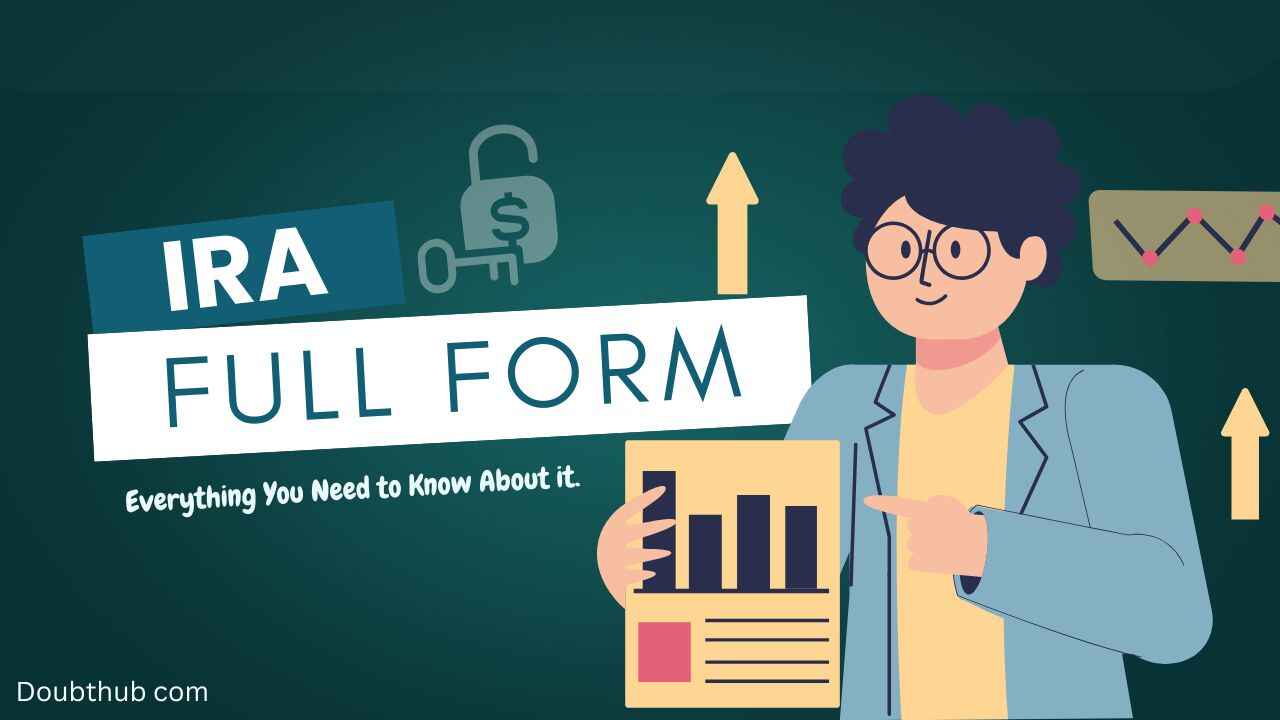Retirement planning is an important financial goal today. Whether you are in a job or doing business, it is very important to secure your retirement savings. In such a situation, an IRA is a popular tax-advantaged investment option that helps people with long-term savings and wealth growth. But what is IRA full form and what is IRA Account?
If you want to know what an is IRA, how it works, its interest rate, tax benefits, and how to invest, then this article will be very helpful for you.
Table of Contents
What is IRA full form in banking?
- Individual Retirement Account
what is a IRA Account? Individual Retirement Account
The individual Retirement Account is a tax-advantaged investment account used to build long-term savings and retirement funds.
A retirement savings account in which people can invest money with tax benefits. Banks, brokers, and mutual fund companies offer IRA accounts. It provides long-term compound growth for retirement.
How does IRA work?
An IRA is a self-directed retirement account in which you can invest in stocks, bonds, mutual funds, and other investments. – IRA Process
- Open an IRA – You can open one through a bank or brokerage firm.
- Make Regular Contributions – You make deposits up to the annual limit.
- Choose Investments – You can invest in stocks, bonds, ETFs, or mutual funds.
- Take Advantage of Tax Benefits – IRAs offer tax-deferred or tax-free growth.
- Withdraw After Retirement – You can make withdrawals after 59½ years.
SQL Full Form: What is Structured Query Language? Meaning, Uses & Key Features
comparison of Traditional IRA Vs Roth IRA
| comparison | Traditional IRA | Roth IRA |
|---|---|---|
| Tax Benefits | Contributions tax-deductible | Withdrawals tax-free |
| Withdrawals | Taxable after retirement | Tax-free after retirement |
| Contribution Limits | According to the rules of IRA | Income-based eligibility |
| Best For | High-income earners | Young investors |
Types of Individual Retirement Account (IRA)
IRA is available in different types which provide different financial goals and tax benefits.
1 Traditional IRA
- Contributions are tax-deductible.
- Tax is applicable at the time of retirement.
2 Roth IRA
- Contributions are made from after-tax income.
- Withdrawals are tax-free.
3 SEP IRA (Simplified Employee Pension)
- Best for self-employed and small business owners.
- Employers can also make contributions for employees.
4 SIMPLE IRA (Savings Incentive Match Plan for Employees)
- Easy retirement plan for employees of small businesses.
- Both employers and employees can make contributions.
Benefits of IRA (Advantages of IRA)
IRA is the best option for long-term retirement planning which provides multiple benefits.
- Tax Benefits – Contributions in Traditional IRA are tax-deductible. Roth IRA has the benefit of tax-free withdrawals.
- Compound Growth – Long-term investment provides the maximum benefit of compounding.
- Flexible Investment Options – You can invest in stocks, bonds, ETFs, and mutual funds.
- Retirement Security – Provides a safe and steady income source after retirement.
- No Employer Dependence – You do not need to depend on any employer’s retirement plan.
Disadvantages of IRA (Individual Retirement Account)
As many benefits as there are, there are some drawbacks that are important to consider:
- Contribution Limits – There is a maximum limit on the amount you can invest in an IRA every year.
- Early Withdrawal Penalty – There is a 10% penalty and tax on withdrawal before the age of 59½.
- Market Risk – Investments depend on market performance.
How to open an account? (Steps to open an account )
If you want to open an IRA, then follow these steps:
- Decide which IRA is best – choose Traditional or Roth IRA.
- Select a bank or brokerage firm – choose platforms like Fidelity, Vanguard, and Schwab.
- Submit required documents – prepare ID proof and income proof.
- Make an initial deposit – make a minimum deposit of IRA.
- Select investments – invest in stocks, bonds, and mutual funds.
Conclusion for IRA Full Form
Individual Retirement Account (IRA) is a powerful financial tool that provides secure savings and tax benefits for retirement.
If you want long-term financial growth and tax savings, an IRA can be a good investment option. However, it is important to understand all the rules and conditions before investing.
In this article, we explored the full form of IRA and its significance in various contexts. Understanding such abbreviations not only enhances our knowledge but also helps in better communication. If you found this information helpful, feel free to explore more full forms on DoubtHub.com and expand your understanding. Stay informed, and keep learning with us!



